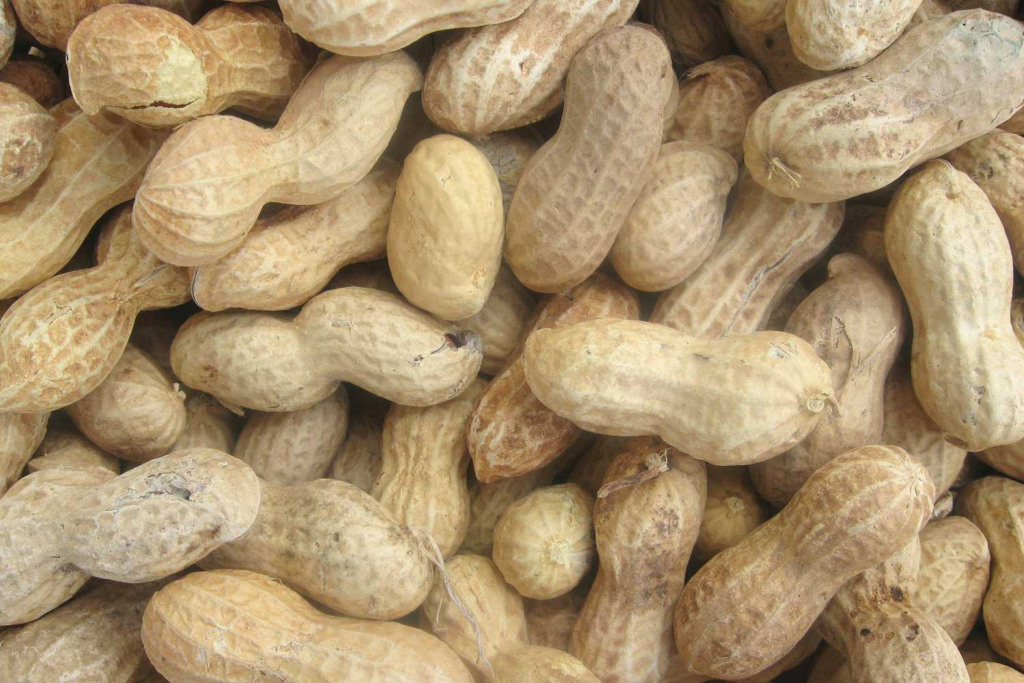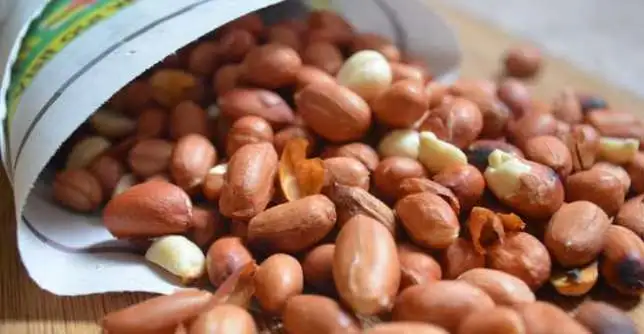
What’s The Distinction Between Groundnuts and Peanuts: Benefits and More
Only some edible legumes have caused as much confusion as the groundnut and the peanut. While many use these terms interchangeably, there exists a nuanced distinction that is worth exploring, both for botanical enthusiasts and culinary aficionados.
Peanut
A peanut, scientifically known as Arachis hypogaea, is not a nut in the botanical sense but rather a legume. Here’s a detailed look at what makes peanuts unique:
Trending Now!!:

Botanical Classification:
- Legume: Peanuts belong to the legume family, Fabaceae, which includes beans, peas, and lentils. Unlike true nuts, which grow on trees, peanuts grow underground, a process known as geocarpy.
Growth and Development:
- Flowering: Peanuts start as a flowering plant. After pollination, the flower’s ovary elongates into a structure called a “peg,” which grows downward into the soil.
- Ripening: Once in the soil, the peg develops into a peanut pod containing one to three seeds (peanuts). This underground ripening is what gives peanuts their unique growth pattern.
Physical Characteristics:
- Shape and Size: Peanuts are typically oval or elongated with a pointed end. Depending on the variety they come in various sizes.
- Shell: Peanuts have a hard, brown shell that splits open when ripe, revealing the seeds inside.
Culinary Uses:
- Raw: They can be eaten raw, though they are more commonly consumed after some form of processing.
- Roasted: Roasting enhances their flavor, making them a popular snack.
- Peanut Butter: Ground into a paste, a staple in many diets, used in sandwiches, cooking, or as a spread.
- Oil: Peanut oil is used for cooking, especially deep frying, due to its high smoke point.
- Flour: Ground into flour for baking or used in sauces like satay.
- Confections: Used in candies, chocolates, and other sweets.
Nutritional Profile:
- Protein is high in protein, making it a valuable food source, especially in vegetarian diets.
- Fats: Rich in monounsaturated and polyunsaturated fats, including heart-healthy oleic acid.
- Vitamins and Minerals: Contains niacin, folate, vitamin E, magnesium, and phosphorus.
- Antioxidants: Contains resveratrol, known for its antioxidant properties.
Cultural Significance:
- Global Cuisine: Peanuts are integral in many cuisines worldwide, from American peanut butter to African groundnut stew, Asian peanut sauces, and Indian snacks like groundnut chutney.
- Agriculture: They are an important crop in many countries, providing food and economic benefits.
Economic Importance:
- Crop Rotation: Peanuts are often used in crop rotation due to their ability to fix nitrogen in the soil, benefiting subsequent crops.
- Industry: Beyond food, peanuts produce plastics, dyes, and other industrial products.
Groundnuts
Groundnuts refer to several different types of plants and their edible parts, depending on the context and region. Here’s a breakdown:

North American Context:
- Apios americana:
- Common Names: Groundnut, Indian potato, hopniss.
- Description: This plant is native to North America. It produces both edible tubers and seeds. The tubers, which grow underground, are commonly referred to as groundnuts. They have a nutty flavor and can be eaten raw, boiled, or roasted. The seeds are also edible but less commonly consumed.
African and Some Asian Contexts:
- Arachis hypogaea:
- Common Names: Groundnut, peanut (in English-speaking countries outside of North America).
- Description: In many parts of Africa, Asia, and other regions, groundnut is another term for what is known as the peanut in the U.S. This legume grows underground, ripens, and is harvested for its seeds, which are commonly eaten roasted, boiled, or processed into peanut butter, oil, etc.
General Botanical and Culinary Context:
- Groundnut as a Concept: “groundnut” can generally refer to any nut or tuber growing underground. This can include:
- Peanuts: As mentioned, in many places outside of North America, peanuts are called groundnuts.
- Other Tubers: Sometimes, other root vegetables or tubers that have a nutty flavor when cooked might be called groundnuts in local dialects or traditional cuisines.
Key Characteristics of Groundnuts (in the context of Apios americana):
- Growth: The plant produces long, vine-like stems that can climb or sprawl. The tubers form a chain along the root system and can be dug up for consumption.
- Nutritional Value: High in starch and protein, these tubers provide a good energy source and nutrients, similar to potatoes, but with a unique nutty flavor.
- Culinary Uses: The seeds can be boiled, roasted, or mashed. They can also be used in stews, soups, or as a side dish. If used, the seeds might be ground into flour or eaten directly.
Cultural and Historical Significance:
- Native American Use: Groundnuts (Apios americana) were a staple food for many Native American tribes, valued for their nutritional content and ease of storage.
- African Cuisine: Groundnuts (peanuts) are integral to dishes like groundnut stew, a popular dish in West Africa.
Botanical Background
Groundnut:
- Botanical Name: Apios americana or Arachis hypogaea (in some contexts).
- Origin: The term “groundnut” traditionally refers to any nut that grows underground. However, in North America, it specifically refers to Apios americana, a plant native to the region, which produces edible tubers and seeds. In other parts of the world, particularly in Africa, groundnut might refer to what Americans call peanuts.
Peanut:
- Botanical Name: Arachis hypogaea.
- Origin: Peanuts are legumes that originated in South America, specifically in what is now Brazil, Peru, and Bolivia. They are unique because, unlike most legumes, they ripen underground.
Key Differences:
- Plant Structure and Growth:
- Groundnut (Apios americana): This plant produces both tubers and seeds. The tubers are what are often consumed, similar to potatoes, but with a nutty flavor. The seeds are also edible but less commonly eaten.
- Peanut: After pollination, the peanut’s flower pegs grow down into the soil, where the peanut pods develop. This is known as geocarpy.
- Culinary Use:
- Groundnut: When referring to Apios americana, the tubers are used much like root vegetables. They can be boiled, roasted, or mashed. The seeds, if used, are often ground into flour or eaten raw or roasted.
- Peanut: Widely used in cooking globally, peanuts can be eaten raw, roasted, or processed into peanut butter, oil, or flour. They’re a staple in many cuisines, from American peanut butter to Asian satay sauces.
- Nutritional Profile:
- Both have high protein content, but their nutritional specifics can differ. Groundnuts (tubers) might offer a different mix of vitamins and minerals than peanuts, which are rich in fats, proteins, and specific vitamins like niacin.
- Cultural and Regional Names:
- Groundnut: In parts of Africa, groundnut is synonymous with peanut. However, in North America, it refers to a different plant altogether.
- Peanut: Known universally by this name in English-speaking countries, except where local terminology like “groundnut” is used.
Conclusion
The distinction between groundnuts and peanuts largely hinges on regional terminology and botanical specifics. While peanuts are universally recognized for their culinary versatility, groundnuts, particularly in their tuber form, offer a unique culinary experience.
Understanding these differences enriches our botanical knowledge and enhances our appreciation for the diversity of edible plants around the world.


